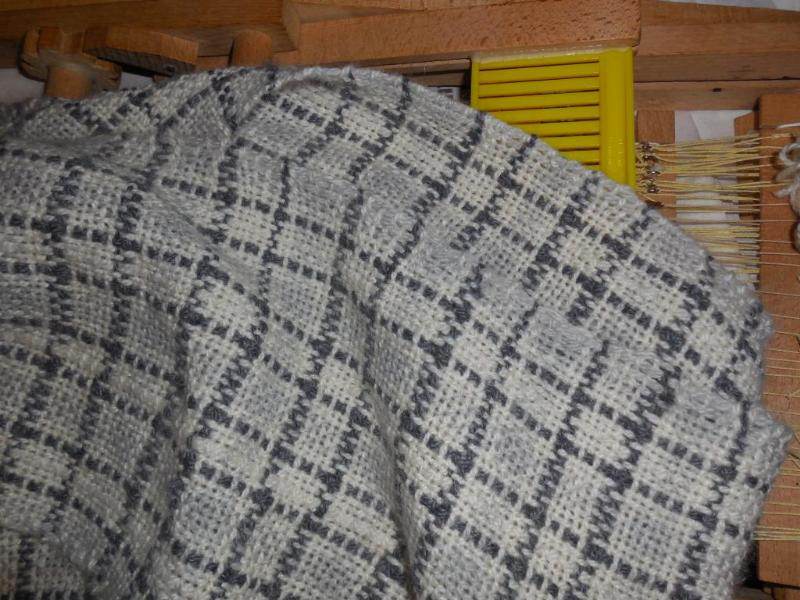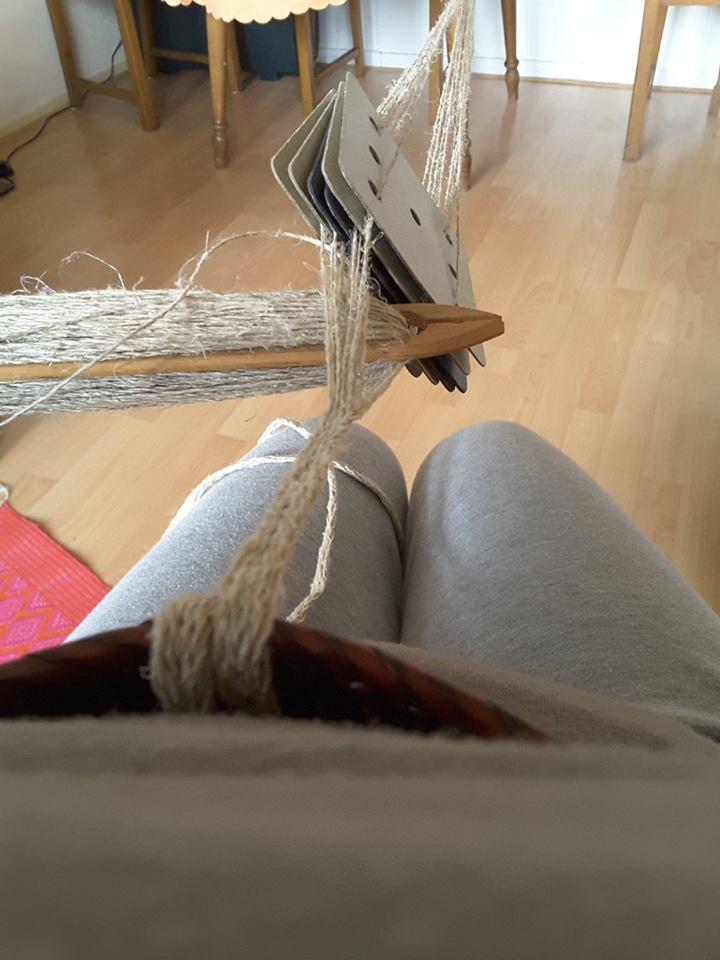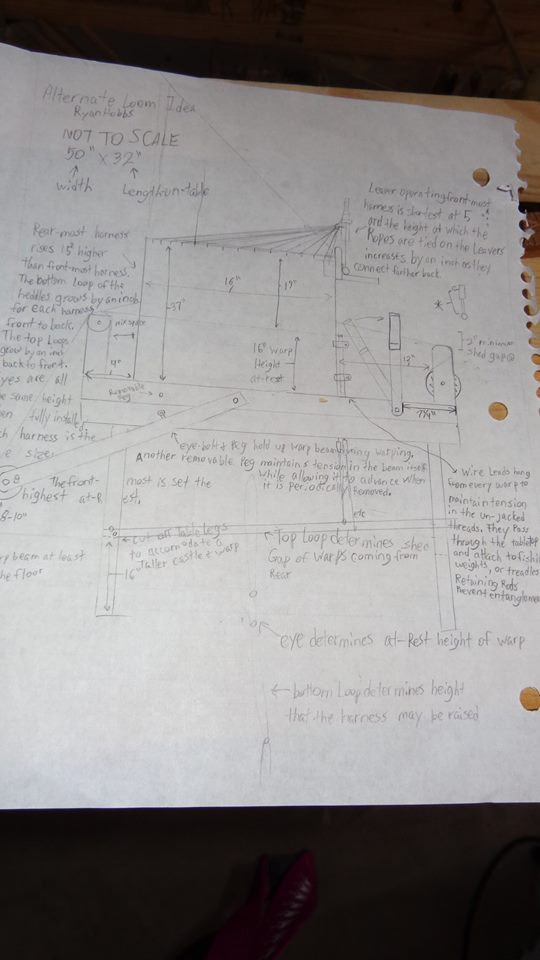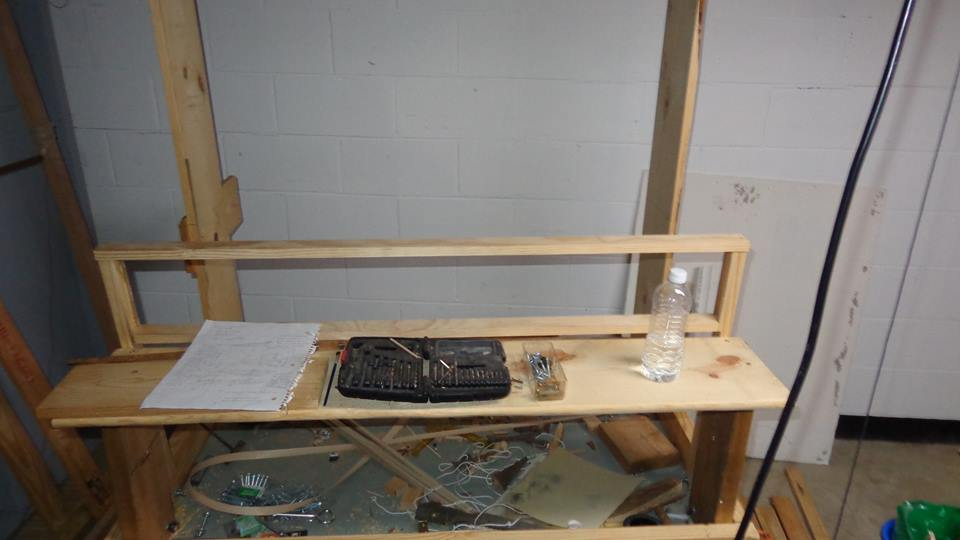
 28
28





 ).
).







Make a loom? Earn a badge! https://permies.com/wiki/148217/pep-textiles/small-loom-PEP-BB-textile
 7
7






 6
6













 6
6











 5
5




 . These are popular little looms and are excellent for making strong, narrow bands. Belts, guitar straps, all sorts of things.
. These are popular little looms and are excellent for making strong, narrow bands. Belts, guitar straps, all sorts of things.










 5
5











 5
5




Best luck: satisfaction
Greatest curse, greed
 4
4




R Ranson wrote:A
One of the limitations of the Inkle Loom is that the band you weave can only be as long as the loom allows. If you want to weave miles of the stuff, a backstrap loom may be the best bet.
Also, the biggest problems with inkle looms, both hand made and commercial, is that the force of the warp will loosen or cause the dowels to lean in over time. This makes the warp uneven and the finished fabric slightly curved.
All these tutorials use commercial wood and hardware. Before the big box store moved into the neighbourhood, this kind of loom was constructed using local materials. At least I think it may have been. I can't find any definitive decision on where this loom originates. Inkle refers to the woven band, not the loom itself. This style of loom may be as recent as the second half of the 20th century. some interesting tidbits about it's history
Best luck: satisfaction
Greatest curse, greed
 2
2




R Ranson wrote:I made a loom this morning. It took about 10 minutes.
Here's the tutorial I used to make a backstrap loom

The loom worked marvelously well. Far better than I expected. My friend's kid (8 years old) was thrilled and took about 30 seconds to get the hang of how to weave with it. About two minutes later, she was weaving better on it than I do. I've set her up with the warp needed to make her own backstrap. Once she finishes it, I'll present her with her own set of sticks and then she will have made her very own loom. Not too bad for someone in third grade (the kid, not me. I passed third grade a few years back).
I'm hugely impressed with backstrap looms. Always before, weavers have told me to avoid them. They aren't 'proper looms'. They are too difficult to make or use. Bla Bla, youcantcha bugs galore. My experience today has showed me that it's the opposite of what I've been taught. Backstrap looms not only are simple to make and use, they open up a whole new world of weaving.
It took no time at all to not just set up, but to make as well. Most of the trouble was trying to find an old pillow case, then deciding that an old kitchen towel would do.
This experience has got me thinking. Most of the world's most beautiful handwoven fabric has been created using simple looms like this. It's almost as if, the simpler the tool, the more complex and beautiful the weave can become. Simple tools like this backstrap loom, seem to allow for greater creativity.
In many cultures, for much of history, people made their own looms out of materials they had to hand. There are many variations on the theme, but you can see the basic idea in a backstrap loom. A few sticks, a bit of string and one has all they need to make beautiful cloth.
I may be a bit over-excited about my new endeavor. I don't mind. I love learning new skills. Especially skills that lead to self sufficiency.
"When there is no life in the soil it is just dirt."
"MagicDave"
 1
1











 4
4





"Also, just as you want men to do to you, do the same way to them" (Luke 6:31)
 2
2




 I much prefer my rigid heddle. (I have a Kromski Harp Forte, an older Harp, and a Beka). I do find that the backstrap style weaving with a rigid heddle instead of string heddles is easier for me though,and I want to try out the Scandanavian-style bandweaving this winter if I get through some of my other projects.
I much prefer my rigid heddle. (I have a Kromski Harp Forte, an older Harp, and a Beka). I do find that the backstrap style weaving with a rigid heddle instead of string heddles is easier for me though,and I want to try out the Scandanavian-style bandweaving this winter if I get through some of my other projects.
 But I know I'll love it once I get used to warping it.
But I know I'll love it once I get used to warping it.
 )
)
 13
13




 2
2




Andrea Redenbaugh wrote:R Ranson,
Do you have any experience with a warp weighted loom? I have done Viking reenactment and was told this is what they used. Any information or resources are appreciated.







 4
4




Best luck: satisfaction
Greatest curse, greed
 11
11





















 5
5





"Also, just as you want men to do to you, do the same way to them" (Luke 6:31)






 5
5






"Also, just as you want men to do to you, do the same way to them" (Luke 6:31)
 2
2















 2
2




Regan Dixon wrote:Oh, by two-sided I meant pegged with long pegs through to the other side, so both sides were pokey, not smooth. Then it wouldn't make it hard to warp, and the tension on the other side might offset the tendency of the peg to pivot in its hole and make for "warped warps". Unless the pegs decided to become U-shaped under tension at both ends. This might also make the loom more leftie-friendly.







 11
11





"We're all just walking each other home." -Ram Dass
"Be a lamp, or a lifeboat, or a ladder."-Rumi
"It's all one song!" -Neil Young
 4
4






No rain, no rainbow.




 4
4




Gretchen Austin wrote:If I post a picture of my inkle loom, any chance one of you could try to explain to me how to thread it? I'd love to try tablet weaving on it. Thanks in advance!







 2
2




Gretchen Austin wrote:If I post a picture of my inkle loom, any chance one of you could try to explain to me how to thread it? I'd love to try tablet weaving on it. Thanks in advance!
 2
2




 1
1








 2
2




Deb Rebel wrote:Okay, I want to make one to take with me this weekend... what length and diameter are your dowels, please? That'll help a lot with recreating what's in the original picture. Thanks.







 1
1




 1
1




Niele da Kine wrote:Good job! Learning new things is always exciting. Even the "fancy" looms are just sticks and strings when you look at them.
I've been weaving on a vintage German "kircher" loom that came with a spinning wheel we'd bought at a yard sale while back. I'd not thought much of it at the time, they just handed me this old cardboard box with some sticks in it and said it went with the spinning wheel. Some folks call it a "sampler" loom, other folks have called it a "kids" loom, but it's great fun.
Soon as I can figure out how to make that yellow plastic part from stuff around the house, then a couple more of these little looms will be made. They are small enough to easily carry around and you can sit at a table and use them.
I've not tried anything intricate, but it's lots of fun.
I suppose you could always sew pieces together if you wanted to make a large thing on your backstrap loom? Messenger bags would be lovely. What's your next project?
 6
6




“Peace is not absence of conflict, it is the ability to handle conflict by peaceful means.” —Ronald Reagan
Located in Western West Virginia









 2
2




Gretchen Austin wrote:Has anyone tried sprang? I'm certain we had a sprang hammock when we lived in Mexico. There are videos on Youtube. I have yet to figure out what to do in the middle, when the piece is nearly done, to keep all the threads from untwisting. Looks fun!
"Also, just as you want men to do to you, do the same way to them" (Luke 6:31)
 2
2




R Ranson said: If you are interested in learning more about tablet weaving, I can write up a tutorial about it in a new thread. Just let me know.
“Peace is not absence of conflict, it is the ability to handle conflict by peaceful means.” —Ronald Reagan
Located in Western West Virginia









 3
3




Cindy Haskin wrote:
R Ranson said: If you are interested in learning more about tablet weaving, I can write up a tutorial about it in a new thread. Just let me know.
Now if you'd said just hollar I would be typing HOLLAR here. Did you ever get this written up and posted elsewhere?
"Also, just as you want men to do to you, do the same way to them" (Luke 6:31)
 1
1




 10
10












|
Whose rules are you playing by? This tiny ad doesn't respect those rules:
Freaky Cheap Heat - 2 hour movie - HD streaming
https://permies.com/wiki/238453/Freaky-Cheap-Heat-hour-movie
|





